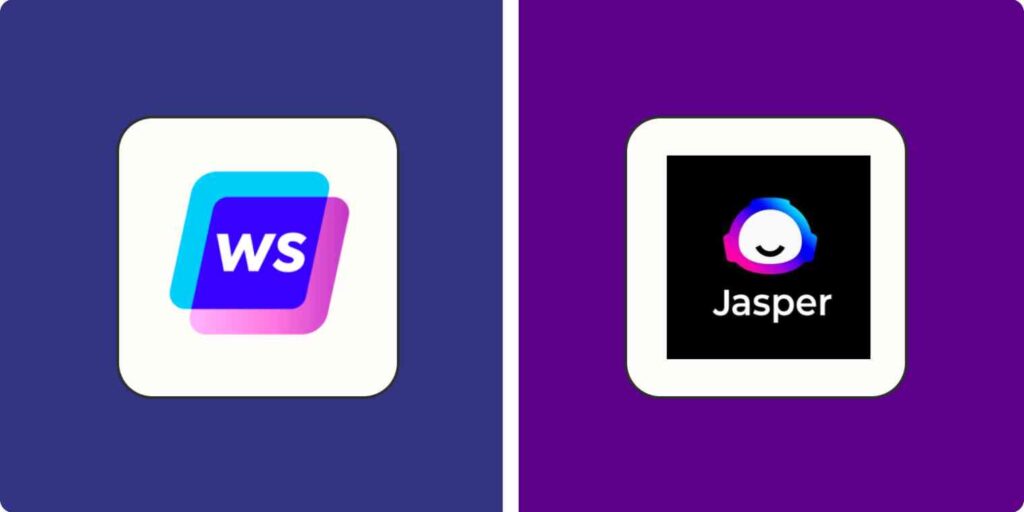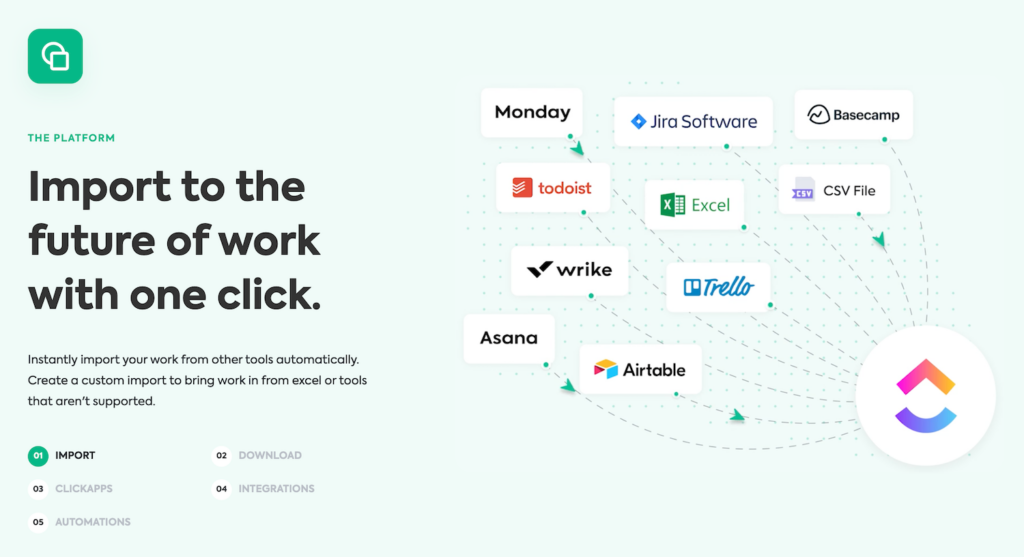In today’s digital age, AI writing tools have revolutionized the way we create content. Among the top players in the market, Jasper and Writesonic stand out as powerful AI-driven platforms that assist in generating high-quality written content. While both tools offer impressive features, they differ in their approach and target audience. In this comprehensive comparison, we will delve into the key aspects of Jasper vs Writesonic, highlighting their strengths, weaknesses, and unique offerings. Whether you are an experienced marketer or a beginner, this article will help you determine which tool best suits your needs.

Jasper and Writesonic: A Brief Overview
Before we dive into the specifics, let’s take a moment to understand the basic features and functionalities of Jasper and Writesonic.
Jasper Overview
Jasper is an AI writing tool that harnesses the power of various AI models, including GPT-4, PalM (Google), Anthropic, Cohere, and its own proprietary model. Powered by OpenAI, Jasper has gained recognition for its ability to produce high-quality content that closely resembles human writing. One of the notable features of Jasper is its automatic selection of the most suitable AI model for each project, ensuring optimal results. With over 50 solid templates and advanced customization options, Jasper provides experienced marketers with a high level of control over the content creation process.
Writesonic Overview
On the other hand, Writesonic is an AI content tool that focuses on simplicity and speed. Powered by OpenAI’s GPT-3, Writesonic offers a user-friendly interface and a wide selection of over 100 templates. Designed with beginners in mind, Writesonic streamlines the content creation workflow, allowing users to quickly generate ideas and transform them into finished content. Despite its simplified approach, Writesonic still delivers impressive results, making it an attractive option for those who prioritize efficiency and ease of use.
Now that we have introduced both tools, let’s delve deeper into their key features and compare them side by side.
Output Quality: Jasper’s Versatility vs. Writesonic’s Efficiency
The quality of the content generated by AI writing tools is a crucial factor to consider. In this aspect, both Jasper and Writesonic excel, albeit with different approaches.
Jasper’s Output Quality
Jasper’s integration of various AI models, including GPT-4, allows it to produce highly accurate and human-like content. The tool’s automatic selection of the most suitable AI model for each project ensures optimal results. Moreover, Jasper’s collaboration with Google, PalM, Anthropic, and Cohere enhances its adaptability and versatility.
Writesonic’s Output Quality
Writesonic, powered by OpenAI’s GPT-3, also delivers high-quality content. While it may not offer the same level of adaptability as Jasper, Writesonic’s streamlined workflow allows for efficient content generation. The tool’s templates and AI model selection (GPT-3.5, GPT-4, or GPT-4+) provide users with options to tailor their content creation process.
Overall, both Jasper and Writesonic deliver impressive output quality, with Jasper offering greater versatility and Writesonic providing a more efficient workflow.
User-Friendliness: Writesonic Takes the Lead
When it comes to user-friendliness, Writesonic takes the lead by providing a seamless and intuitive experience for users of all skill levels.
Writesonic’s User-Friendly Workflow
Writesonic’s user-friendly interface and organized template categories make it easy for beginners to navigate the platform. Upon logging in, users are immediately presented with a comprehensive selection of templates. Simply selecting a template and providing the necessary details allows users to generate content effortlessly. Whether you need a long-form article or a social media post, Writesonic’s templates cover a wide range of content types.
Jasper’s Advanced Interface
Jasper, on the other hand, offers a more advanced interface that may require some familiarity with AI writing tools. While seasoned content writers may appreciate the level of control Jasper provides, beginners may find it more challenging to navigate. Jasper’s template-based approach, with sections like intro, topic, and conclusion, offers more flexibility but also requires more input from the user.
In terms of user-friendliness, Writesonic’s straightforward workflow and intuitive interface make it the more beginner-friendly option.
Customization and Flexibility: Jasper’s Fine-Tuning Capability
Customization and flexibility are vital for tailoring content to individual needs. In this aspect, Jasper offers more options for fine-tuning the AI workflow.
Jasper’s Customization Features
Jasper allows users to fine-tune the AI workflow according to their specific requirements. With features like Focus mode, Chat mode, and Power mode, users can interact with Jasper in various ways to achieve the desired results. In Focus mode, users can co-write with Jasper, providing specific instructions for style and tone. Chat mode transforms Jasper into a chatbot-like assistant, while Power mode offers pre-built workflows for different content types. Additionally, Jasper enables users to save their commands and workflows as recipes for a more efficient and repeatable process.
Writesonic’s Limited Customization
While Writesonic does offer some customization features, such as brand voice selection, the level of control is relatively limited compared to Jasper. Users can choose between different AI models (GPT-3.5, GPT-4, or GPT-4+), but the extent of customization is not as extensive as with Jasper. However, Writesonic’s simplicity and efficiency make it an appealing choice for those who prioritize speed and ease of use over fine-tuning options.
In terms of customization and flexibility, Jasper offers a wider range of options, allowing users to have more control over the AI writing process.
Integrations: Writesonic’s Wide Range vs. Jasper’s Key Connections
Integrations with other tools and platforms are crucial for seamless workflow integration. In this regard, Writesonic and Jasper offer different integration options.
Writesonic’s Native Integrations
Writesonic integrates natively with Surfer for SEO, DALL-E for image generation, Copyscape for plagiarism checking, and WordPress for easy content management. These native integrations enhance Writesonic’s capabilities and ensure a smooth workflow within existing tech stacks.
Jasper’s Zapier Integration
While Writesonic boasts native integrations, Jasper compensates through its Zapier integration. Jasper seamlessly connects with Zapier, allowing users to automate workflows and integrate with a wide range of apps and platforms. Whether it’s creating Twitter posts from Writesonic copy or generating Google Docs with new content from Writesonic, Jasper’s Zapier integration offers flexibility and automation possibilities.
While Writesonic may have more native integrations, Jasper’s Zapier integration provides a versatile solution for integrating with other tools and platforms.
Pricing: Writesonic’s Affordability vs. Jasper’s Feature-Rich Plans
Pricing is a crucial factor to consider when choosing an AI writing tool. Writesonic and Jasper offer different pricing structures, catering to different budgets and needs.
Writesonic’s Affordable Pricing
Writesonic offers a freemium model, with a generous free plan that includes 10,000 words per month and access to all 100+ templates. The paid plans start at $19/month, providing 100,000 words and unlocking access to GPT-4 and GPT-4+ models. As your word count needs increase, higher-tier plans are available at $49/month for 300,000 words. However, it is worth noting that the word count varies depending on the quality type selected.
Jasper’s Feature-Rich Plans
Jasper’s pricing structure is based on functionality and user seats. The plans start at $49/month, offering unlimited words with access to 50+ templates and document mode. Higher-tier plans, such as the Teams plan starting at $125/month, provide additional features like multiple brand voices and increased memory. Jasper’s pricing is higher compared to Writesonic but offers comprehensive features and unlimited word count.
If affordability is a priority, Writesonic’s pricing plans cater to smaller budgets. However, for those who require extensive features and unlimited word count, Jasper’s plans provide more value.
Conclusion: Choosing the Right Tool for Your Needs
In conclusion, both Jasper and Writesonic excel in their respective areas, making it challenging to determine a clear winner. Ultimately, the choice between these AI writing tools depends on your specific needs and priorities.
If you are an experienced marketer looking for a tool that offers fine-tuning capabilities, extensive customization options, and a wide range of integrations, Jasper is the ideal choice. Jasper’s versatility and advanced features provide greater control over the AI writing process, allowing for highly personalized and tailored content creation.
On the other hand, if you are a beginner or have a limited budget, Writesonic offers a user-friendly interface, efficient workflow, and a generous free plan. Writesonic’s simplicity and affordability make it an excellent choice for those who prioritize speed and ease of use.
Ultimately, it is essential to evaluate your requirements, consider the features and pricing, and choose the tool that aligns best with your content creation goals. Whether you opt for Jasper or Writesonic, both tools will undoubtedly enhance your writing process and save you time and effort.
Now that you have a comprehensive understanding of Jasper and Writesonic, you can make an informed decision and embark on your AI-powered content creation journey.
This article was originally published in June 2023. The most recent update was in September 2023.





